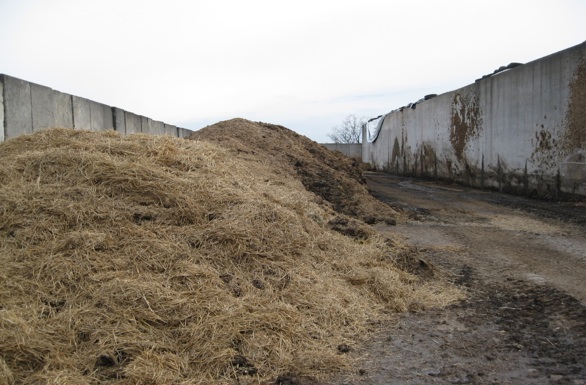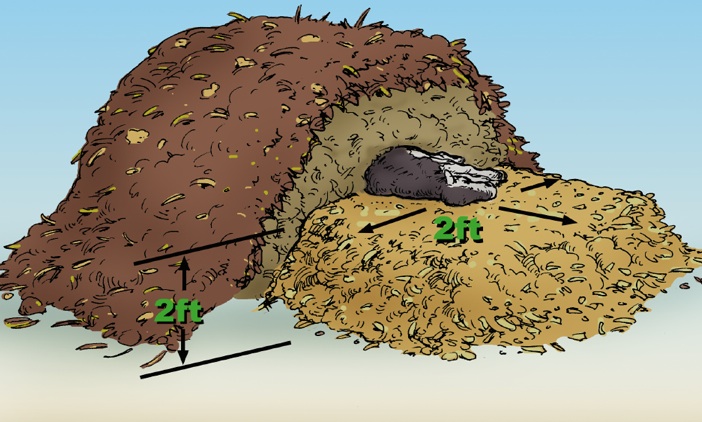View Section 5: Mortality Composting
On-Farm Composting
You can choose to read the section, watch the video, or do both. "Learn More" resources are available at the bottom of the page.
Read It:
Mortality composting is cost effective, environmentally sound, easy to do, and can be done at any time of the year. In many states, mortality composting is encouraged as long as certain guidelines are followed. The composting site should be in a well-drained area and at least 200 feet from water sources.

Farmers need to be sure this process will not contaminate water sources or allow leachate to enter water bodies. Many states have specific distances that are required from wells, streams and lakes, property lines, and other residences. It's also important to keep other animals away from the dead animal and composting site to prevent the spread of pathogens.
Static pile composting is often recommended as a safe and easy way to dispose of a carcass. When your pile is constructed properly, it will allow for adequate natural aeration. The temperature of your static pile and the duration of those temperatures can significantly reduce pathogen survival.

When using the static pile for mortality composting, the animal is enveloped in a carbon-based material and left for months or years with no turning or work required. The micro- and macro-organisms digest the animal and give off heat - which kills pathogens. It typically takes from six to 12 months for the animal to decompose.

In addition to a site with adequate land, here are some key points of static pile carcass composting from our friends at Cornell University.
- lay a 24-inch bed of bulky carbon-based material with pieces 2 to 6 inches long (utility and municipal wood chips work well).
- make sure the base is large enough to allow for a 2-foot clearance around the entire animal
- lay the animal in the center of the bed
- cover the carcass with 24-inches of carbon material, making sure the entire animal is well covered
- leave the pile alone for 6 months to 1 year -- after that, the pile can be turned or combined with another pile. The entire process won't be completed for about a year. In one year, you will still find large bones.

The result should be a soil-like material that can be used in forests or on crops like trees, flowers, and plants. Do NOT use this material for any food crops.
Watch It:
The above is just an overview on how to do Mortality Composting. If you want to know more about the process, check out this presentation from Jean Bonhotal from Cornell University Waste Management Institute.
Learn More:
- Learn the details of mortality composting at Cornell University's Mortality Composting webpage.
